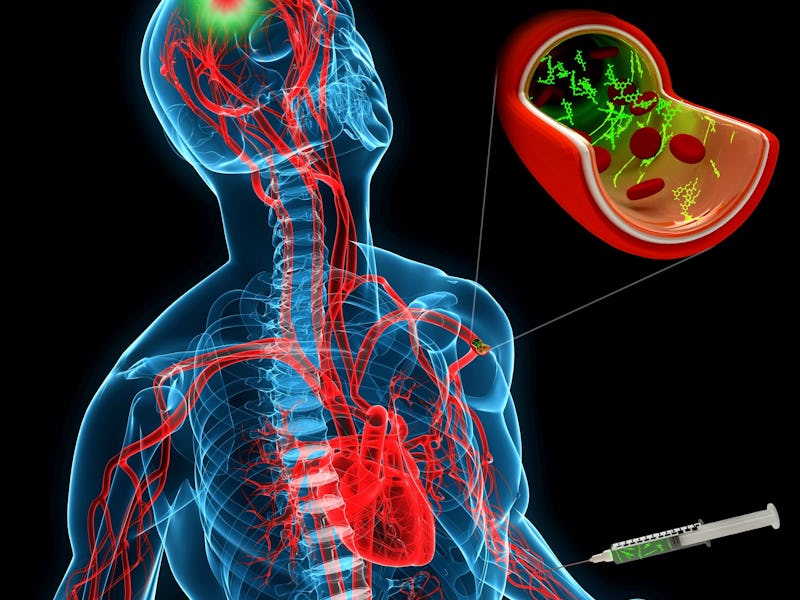Researchers Develop Tchnology That Could Deliver Drugs to Brain Injuries
Peptides that seek out injured areas of the brain could eliminate the need for invasive needles.

Healing injured brains is a delicate matter. When presented with a traumatic brain injury, surgeons can’t exactly dive in with a scalpel and needles the way they might when dealing with less-sensitive body parts, like limbs and livers. Navigating brain tissue needs to be precise yet rapid, and, above all, nimble — and researchers publishing their work today in Nature Communications may have just discovered the trick to making it happen. By commandeering the movement of a tiny peptide, they’ve figured out how to deliver drugs to injured parts of the brain without clumsy needles getting in the way.
Right now, when one of the 2.5 million Americans that sustain traumatic brain injuries each year shows up at a hospital — usually after a car crash, a bad fall, or a physical beating — all the best surgeons can do is stabilize the patient, usually by maintaining blood flow to the brain and making sure pressure inside the cranium doesn’t change too rapidly. But currently, there’s not much they can do about the secondary effects of brain injury — factors like inflammation, rising numbers of free radicals, and overexcited neurons — all of which can lead to the death of brain cells.
There are a hundred or so drugs in development to deal with these issues, but none have been approved yet, says Sanford Burnham Prebys Medical Discovery Institute’s Aman Mann, Ph.D., the first author of the study. But even when they are approved — hopefully soon — there’s still no truly safe way of getting them to the injured area. For the most part, their delivery still relies on injections directly into the brain — which, obviously, can become complicated. Generally speaking, you don’t want to stick foreign objects into one of the most densely packed organs in the body.
What Mann and his team devised was, essentially, a new delivery system that could do away with the brain-invading needles at the center of the current injury treatment paradigm. Their vehicle is a nano-scale chain of just four amino acids that seeks out and binds directly to injured areas of the brain when it’s injected into the bloodstream. Loading these peptides up with drugs could prove to be an effective way of getting meds to these areas intravenously — that is, with a needle in the arm, rather than the head.
The researchers have successfully tested their peptide’s drug-toting ability in mice with injured brains as well as in injured human brain samples. While it’ll be some time before we’ll see the peptides used in hospitals — and for them to be used as tools for injury detection, like the authors hope — it’s clear the authors have high hopes for their work. They’ve already licensed their platform to a startup called AivoCode, which has received support from the National Science Foundation.